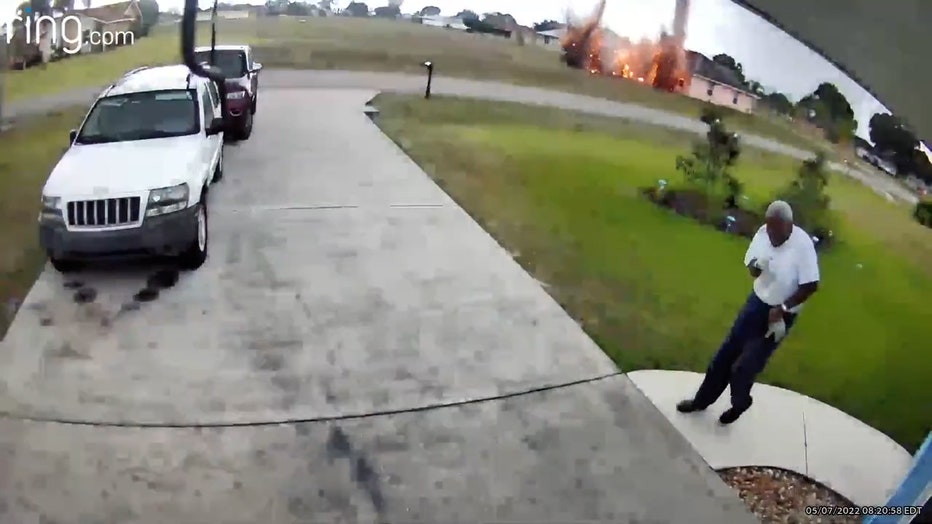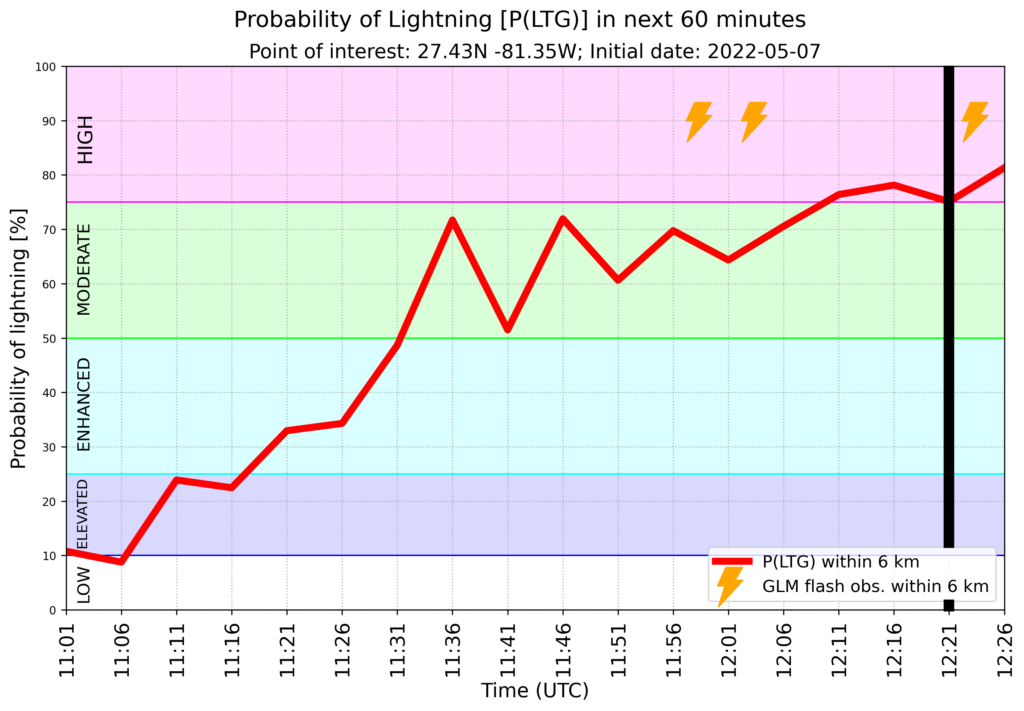Bolt out of the blue
Florida is one of the lightning capitals of the world, so residents need to be constantly aware of lightning safety. NOAA/CIMSS LightningCast might be able to help with that.
A tree and home in Sebring, Florida were suddenly struck by lightning on the morning of Saturday, May 7th. A line of storms was edging its way eastward. A neighbor who was outside at the time said, “It wasn’t raining. It was nice and warm. It was cloudy, but that was it. And then boom!” This underscores how easy it is to be caught unaware of potential lightning danger.
LightningCast can help with users’ situational awareness. LightningCast is an experimental deep-learning model trained on thousands of GOES-R ABI and GLM images to predict the probability of next-hour lightning occurrence. In the animation below, the red dot is Sebring, Florida.

Below is a time series of LightningCast probability and GLM observations around the home in Sebring. Lightning struck the tree and home at 8:21 EDT, marked by the vertical black line below. You can see a rapid increase in probability of lightning from 11:26 to 11:36 UTC (7:26 to 7:36 EDT), reaching 70%. This was about 25 minutes before the first nearby lightning strike and 45 minutes before the Sebring home was struck.

The animation below from the National Weather Service lightning safety page shows that most lightning casualties occur before a thunderstorm is fully overhead, or before it fully departs the area, when people might not realize their vulnerability to lightning and don’t seek shelter soon enough or leave shelter too soon.


